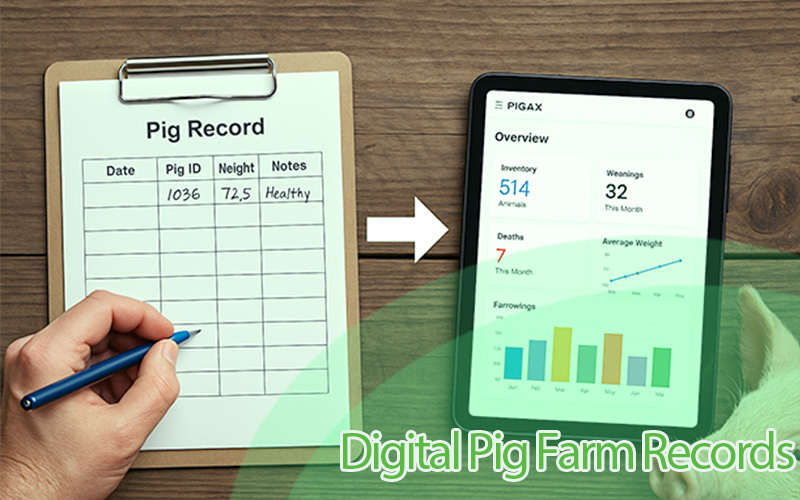Top Reasons Why Beginner Pig Farmers May Fail in the Piggery Business
Starting a pig farm may seem like a quick way to make money, but the reality is far from easy. Many new pig farmers fail because they jump into the business without planning or understanding what pigs need. The idea of raising pigs and earning from them sounds promising. But here’s the hard truth: most beginner pig farmers fail. Why? Because they often don’t manage their finances or farms properly, leading to financial ruin or sickly, unproductive pigs. Want to avoid costly mistakes? Read on to understand the traps that lead to failure—and how you can dodge them.
The Most Common Reasons Why Pig Farmers Fail
Starting a piggery requires a solid foundation in financial and farm management, yet many new farmers struggle in these areas, leading to business failure. Proper financial planning and effective management of the piggery are essential for sustainability and growth.
Poor Financial Management
One of the quickest ways to fail as a pig farmer is to ignore your finances. New farmers often jump in without a clear budget or financial plan, hoping that the profits will somehow take care of everything. This thinking is dangerous and wrong. Raising pigs is expensive—feed, medical care, housing, and unexpected expenses add up fast.
Here’s what you should do: Start with a detailed budget. Know the costs of feeding and taking care of each pig and make sure you have extra money set aside for emergencies. Experts suggest having at least 20% extra in your budget to cover sudden costs, like vet bills or broken equipment. Also, track every expense. This is not just for accountants—tracking costs will help you see where you’re wasting money, so you can fix it. Successful farmers uses a piggery management tool to track expenses, making it easy and accurate.
Inadequate Piggery Management
Managing a pig farm is about more than just feeding the pigs. Many beginners fail because they don’t understand how much care, hygiene, and space pigs need to thrive. For instance, pigs need plenty of space to move, and they hate living in dirty, cramped pens. Poorly managed farms lead to sick pigs, low-quality pork, and lower profits.
Here’s how you can manage your piggery better: Ensure each pig has enough space to move around comfortably. Clean their pens regularly and make sure they have access to clean water and fresh air. Many pig diseases, like foot-and-mouth disease, spread in filthy conditions. Poor hygiene isn’t just bad for your pigs; it’s bad for your wallet. According to the Food and Agriculture Organization, pig farms that maintain strict hygiene and regular cleaning have significantly lower disease rates.
Other Reasons Why New Pig Farmers Fail
Sometimes, financial and piggery management are in place, but other factors still lead to failure. Here are some additional pitfalls you should avoid:
Overreliance on Quick Profits
A common misconception is that pig farming will yield quick profits. Many new farmers expect to see money within a few months, but in reality, it takes time for pigs to grow to market weight, and even longer to develop a steady income stream. If you’re looking for a quick buck, pig farming isn’t for you. Be prepared for the long haul and set realistic expectations for your farm’s profits.
Inconsistent Feed Quality or Supply
Pigs need consistent, high-quality feed to grow well. Changing feed sources or buying low-quality feed might save money initially, but it results in poor growth and health problems. Don’t try to cut costs on feed. Instead, build a relationship with a reliable supplier and focus on providing nutritious feed consistently.
Insufficient Record-Keeping
Without proper records, it’s impossible to track how much you’re spending or earning, or identify where you’re making mistakes. Keep track of every expense, income, and each pig’s health records. Even simple records are better than none, and they can help you make better decisions in the future.
Ignoring Environmental Factors
Pigs don’t handle extreme heat or cold well, and a poor environment stresses them, making them prone to disease. If you’re serious about pig farming, invest in proper shelter to protect your pigs from the weather. Temperature control, proper ventilation, and insulation are key to keeping pigs healthy and productive.
Overlooking Labor Requirements
Pig farming is hard work. If you’re thinking about running a farm alone, think again. Pigs need daily feeding, cleaning, health checks, and other tasks that are difficult for one person to manage alone. Plan for labor needs and, if necessary, hire help. Even part-time assistance can make a significant difference in your farm’s success.
Lack of Marketing Strategy
It’s not enough to raise pigs; you also need to sell them. Many beginners fail because they don’t have a clear plan to reach buyers. Talk to local butchers, grocery stores, or even restaurants before your pigs are ready for market. Knowing where you’ll sell your pigs gives you confidence and financial security when it’s time to harvest.
Poor Disease Prevention and Biosecurity
Pigs are highly susceptible to diseases that can spread quickly in crowded conditions. Some farmers don’t realize that they should prevent diseases, not just treat them when they arise. Invest in basic biosecurity measures—restrict visitor access to your piggery, ensure all workers sanitize before entering, and monitor for any signs of illness.
Inadequate Knowledge and Training
Pig farming isn’t just “raising pigs.” There’s a lot to learn about animal husbandry, feed nutrition, breeding, and farm management. Don’t assume you know everything—take the time to learn from experienced farmers or attend training programs. With the right knowledge, you can avoid common pitfalls.
Poor Farm Planning and Management
Planning includes knowing how much space you need, what type of shelter works best, and what infrastructure (like water and waste systems) is required. Too many beginners skip this planning phase, resulting in overcrowded or unsuitable environments. Think of the space you need, and always plan for growth.
Conclusion
Succeeding in pig farming is possible, but it requires more than just enthusiasm. Focus on managing your finances smartly and keeping your pigs healthy and happy. Don’t rush in hoping for quick profits, and don’t skimp on planning, record-keeping, or feed quality. By avoiding these mistakes, you’re setting yourself up for a successful, profitable farm.




